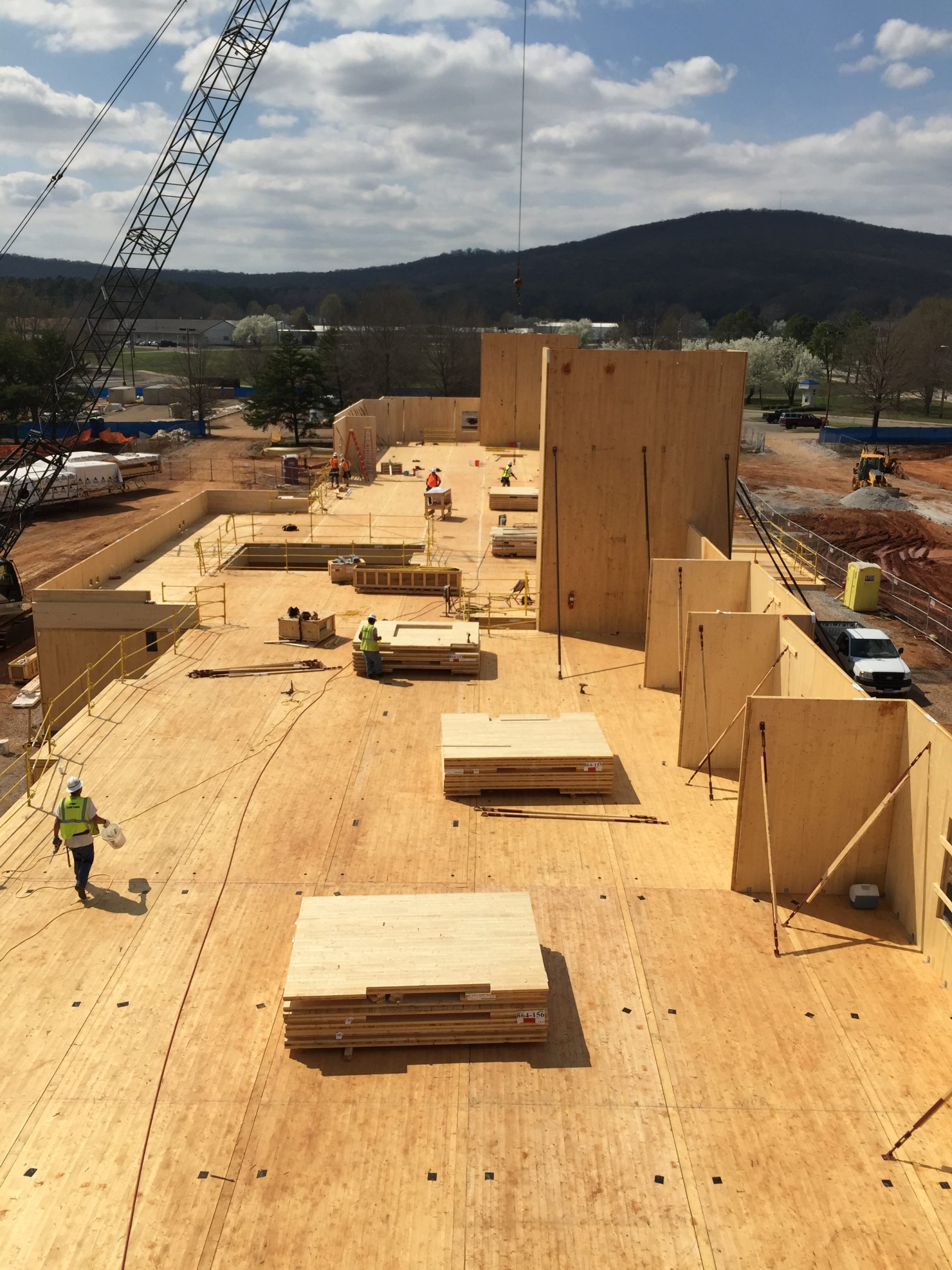Mass Timber Thermal Performance
Terminology
- U-Factor = 1/R-value, measures of thermal conduction through a material.
- Prescriptive R-value. The R-value of the insulation as stated on the material and/or its packaging. This is not the rating of an overall assembly.
- Clear wall R-value. R-value estimation for the exterior wall area containing only insulation and necessary framing materials for a clear section with no fenestration, corners, or connections between other envelope elements such as roofs, foundations, and other walls. It also includes interior and exterior sheathings, air films, and finish layers.
- Center-of-Cavity R-value. R-value estimation at a point in the wall’s cross-sectional R-value containing the most insulation, plus drywall, sheathing, siding, and interior and exterior air films.
- Whole-wall R-value. R-value estimation for the whole opaque wall including the thermal performance of not only the “clear wall” area with insulation and structural elements, but also typical envelope interface details including wall/wall (corners), wall /roof, wall/floor, wall/door, and wall/window connections.
- Air infiltration: Testing for air leakage is mandatory in the 2018 IECC.R402.4.1.2 Testing. The building or dwelling unit shall be tested and verified as having an air leakage rate not exceeding five air changes per hour in Climate Zones 1 and 2, and three air changes per hour in Climate Zones 3 through 8. Testing shall be conducted in accordance with RESNET/ICC 380, ASTM E779, or ASTM E1827 and reported at a pressure of 0.2-inch w.g. (50 Pascals). Where required by the code official, testing shall be conducted by an approved third party. A written report of the results of the test shall be signed by the party conducting the test and provided to the code official. Testing shall be performed at any time after the creation of all penetrations of the building thermal envelope.
While air infiltration is impossible through solid/mass wood, all wood joinery needs to be designed to seal the assembly from air and water intrusion, especially in high wind regions. All builders, regardless of their methods or materials of construction, are being trained to pay attention to the details of attaching components and assemblies to minimize infiltration.
Thermal Buffering
Thermal mass acts like a battery, storing energy for later use. The release over time of heat and moisture back into the ambient conditioned space. The dynamic exchange of heat and moisture between the wood mass and the ambient indoor condition is not represented by the static ratings of materials used to certify R-value.
Thermal Comfort
A very simplified explanation for the thermal comfort in mass wood buildings can be expressed by warm inner surfaces (walls, ceilings, etc. of wood), which enable the inhabitant to turn down the inner air temperature, yet maintain the same level of thermal comfort. In the range of 17° to 23°C (inner air temperature), every degree [k] is equivalent to roughly 7% of overall heating energy demand.
Thermal comfort is defined by DIN EN 7730 and ASHRAE Standard 55.
Air leakage is not only an energy consumption issue, but it is also synonymous with a drafty house and impacts thermal comfort.

